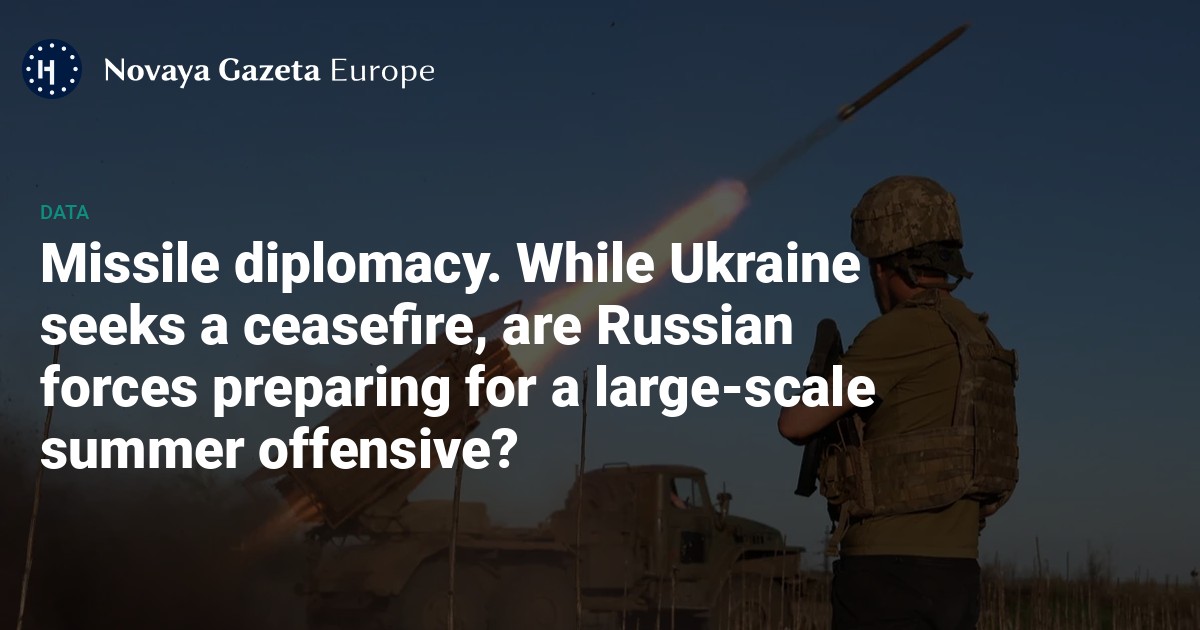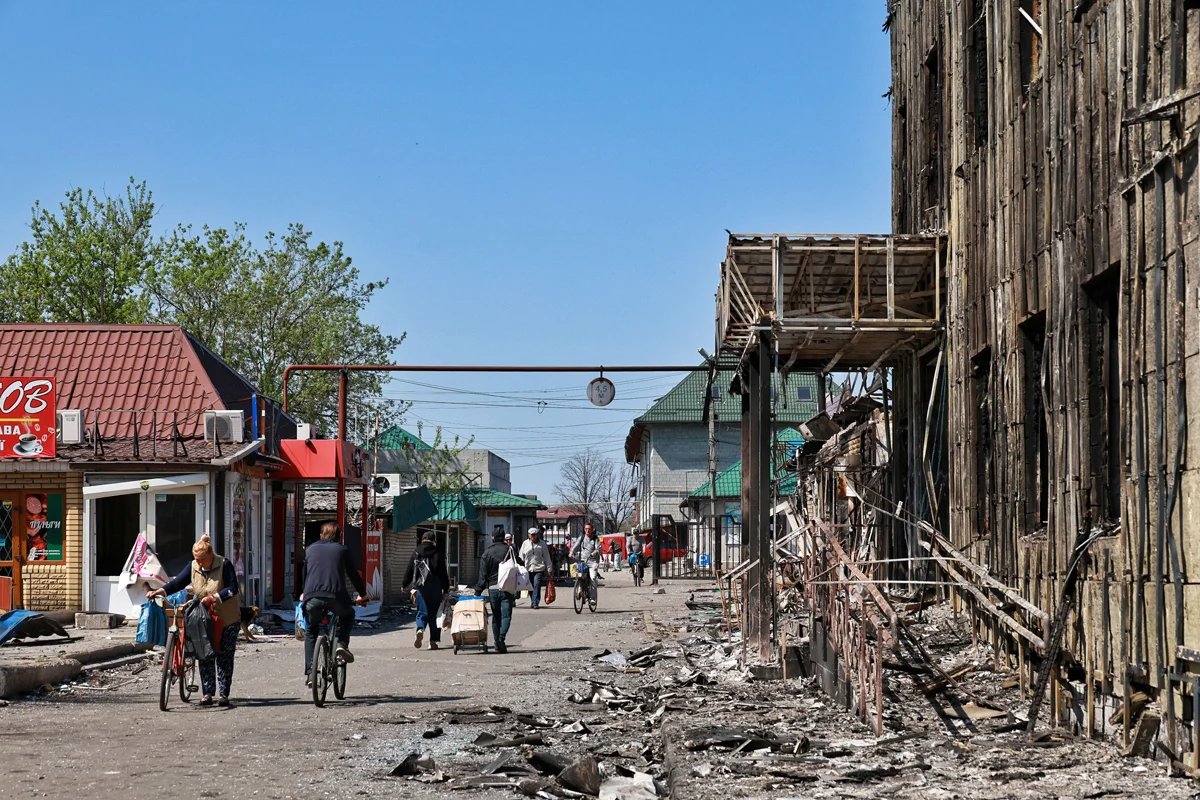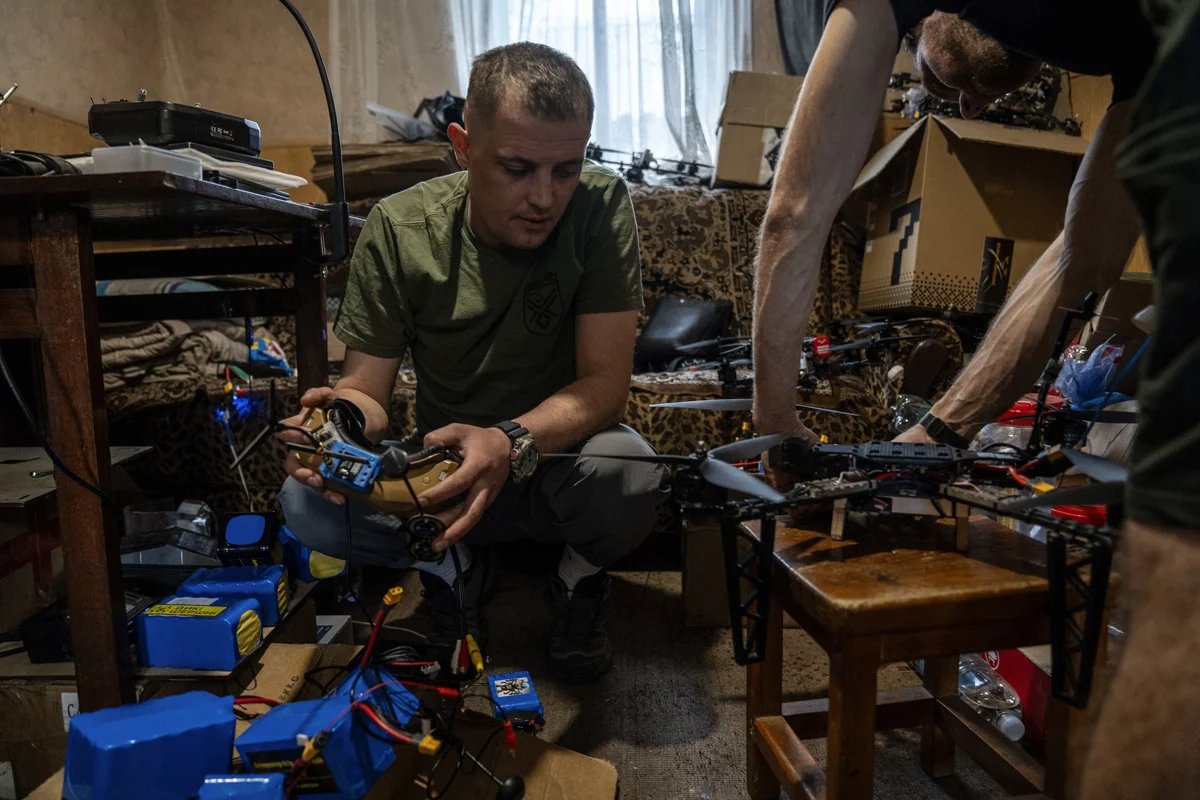



Fighting between Russia and Ukraine has once again intensified. Ukrainian President Volodymyr Zelensky has confirmed ongoing pressure from the Russians in the country’s northeastern Sumy region, raising fears of a new summer offensive. But how much weight do Russia’s claims that it is prepared to fight the war “forever” carry?
According to Zelensky, the Russians have concentrated about 67,000 troops in the area of Sumy. Meanwhile, the Russian Defence Ministry said on Monday that its troops had already captured the settlement of Marine in the Sumy region, with a population of about 50 people.
Evacuation has begun from areas bordering Russia in the Sumy region, affecting over 4,000 people and 202 settlements, according to Governor Oleh Hryhorov, who said over 60% of the population in the evacuation zone had already left.
The American Institute for the Study of War (ISW) said on Sunday that Russia aimed to create a defensive “buffer zone” in northern Ukraine along the border and have the city of Sumy within artillery range.
The ISW report was reaffirmed by Vladimir Putin’s comments during a televised meeting with government officials on Thursday, in which he announced the creation of a “buffer security zone” along the Ukrainian border, accusing the Armed Forces of Ukraine (AFU) of shelling civilian objects in the Russian border regions of Kursk, Belgorod and Bryansk.
“Should negotiations fail, [Russia] intends to take control by military means.”
For now, the most active area of the frontline is relatively far from the border, near the Donetsk region town of Pokrovsk, whose capture is seen as Moscow’s key objective, bringing it closer to full control of the region. “The most dangerous areas now are where Pokrovsk and Toretsk meet, where Russian forces are trying to break through to Kostiantynivka,” said military analyst Kirill Mikhailov. “Another key area that could be dangerous for the AFU is Lyman, in the Donetsk region, where Russian forces are expanding the bridgehead on the right bank of the Zherebets River,” Mikhailov added.
“Many analysts believe that the goal of any Russian summer campaign is to reach the approaches to the agglomeration of Slovyansk — Kramatorsk — Druzhkivka — Kostiantynivka for a subsequent assault,” Mikhailov continues. “These are the largest towns still under Ukrainian control in the Donetsk region, so their capture would go some way towards establishing control over the entirety of the four regions of mainland Ukraine, as enshrined in the Russian constitution. As we saw again at the talks, the Russians present the handover of these regions as a prerequisite for a ceasefire, but should negotiations fail, it intends to take control by military means.”

Russian servicemen in the Kursk region, 17 April 2025. Photo: Sergey Bobylyov / Sputnik / Imago Images / Scanpix / LETA
“The Russian authorities are already calling the Sumy region the fifth in line for capture.”
However, there is a “dangerous situation” developing in the Sumy region too, where the Russian army already controls about 100km² of Ukrainian territory, says Ivan Stupak, a military analyst and former Ukrainian secret service employee.
“The Russian authorities are already calling the Sumy region the fifth in line for capture,” Stupak says.
Vladimir Medinsky, who led the Russian delegation to the Istanbul talks between Moscow and Kyiv last week, even went as far as to threaten Ukrainian representatives that Russian forces would seize both Sumy and the neighbouring Kharkiv region should Kyiv not agree to Moscow’s demands, adding that Russia was prepared to fight the war “forever”, The Economist’s Oliver Carroll reported last Friday.
Military expert Yury Fyodorov believes about 67,000 Russian soldiers may be stationed in the Kursk area, as Zelensky recently claimed. This could lead to the creation of a bridgehead, though Fyodorov sees no immediate catastrophe for Ukraine in this area.
“Can we really talk about the capture of Zaporizhzhia, Sumy or Kharkiv, when they haven’t been able to occupy the town of Chasiv Yar for over a year?”
“In recent days, there has been some escalation at the front, with clashes growing in intensity,” says Fedorov. “But I still don’t see much prospect of a Russian offensive yet. The Russian army managed to occupy a record 700–750km² in November. Since then, the pace of the Russian offensive has shown a marked decrease. In March, the Russians occupied 130–140km², and in April about 150km².”

Fortifications in the Sumy region near the Russian border, 17 August 2024. Photo: George Ivanchenko / EPA
Fyodorov argues that even the occupation of several thousand more square kilometres of Ukrainian territory won’t decide the outcome of the war.
“In the worst case scenario, Ukraine may lose thousands more square kilometres of its territory,” Fyodorov says. “But the Russian army probably won’t be able to capture large cities. Can we really talk about the capture of Zaporizhzhia, Sumy or Kharkiv, when they haven’t been able to occupy the town of Chasiv Yar for over a year?”
For his part, military observer David Sharp thinks Zelensky’s claim of 67,000 Russian soldiers on the border of the Sumy region is a serious exaggeration. Sharp says there are currently border skirmishes involving relatively few servicemen on either side.
Military expert and AFU reserve colonel Roman Svitan believes that the Russian units stretched along the borders of the Russian Kursk and Belgorod regions with the Ukrainian Sumy region could amount to 120,000 soldiers. However, that wouldn’t be enough to remain in control of hundreds of kilometres of front line and storm the city of Sumy itself. He assumes tactical clashes will continue in the Kursk area, but will not escalate into operational warfare.

People walk past shops damaged by Russian shelling in Pokrovsk, Donetsk region, 23 April 2025. Photo: Nina Liashonok / Ukrinform / Rex Features / Vida Press
Fyodorov draws parallels between the current situation in the Donetsk region, near Pokrovsk and Kostiantynivka, and the 2022 battles for the much smaller Sievierodonetsk-Lysychansk-Rubizhne agglomeration.
Those cities were razed to the ground, using 30,000–40,000 rounds of ammunition per day, Fyodorov notes, adding that Russia doesn’t have that quantity available now. Furthermore, the AFU has a noticeable advantage in terms of drones on the frontline. Fyodorov cites Russian military correspondents who say that Ukraine has about seven times more FPV drones than Russia, making it impossible for the Russians to mount a successful attack.
“Making forecasts for a summer campaign is a thankless task.”
“As I understand it, all the talk of an impending large-scale Russian offensive counts for little,” Sharp told Novaya Gazeta Europe. “In the summer of 2024, before the [Ukrainian] incursion into the Kursk region, the Ukrainian authorities also talked of the danger of a Russian offensive on the Sumy or Kharkiv region. So far, I don’t see a formation capable of advancing deep into AFU positions.”

Ukrainian servicemen at work at an FPV drone assembly centre in the Donetsk region, 14 May 2025. Photo: Jose Colon / Anadolu / Abaca / Vida Press
“Making forecasts for a summer campaign is a thankless task,” says Sharp. “The small town of Chasiv Yar has held off Russian troops for more than a year. Toretsk did for almost as long. However, the AFU lost Kurakhove, for example, very quickly. There is too much we don’t know. ... I don’t think Russia can’t keep up the fight at this rate for a long time. ... But Ukraine is also being depleted. ... So I won’t even try to predict an outcome several months ahead.”
“The AFU is lacking personnel,” says Svitan. “However, Ukraine currently has up to half a million law enforcement officers and interior troops. If things get critical, they can, by law, be called up for military service.”
For now, US assistance is still coming into Ukraine reliably. Mikhailov reiterates that the Trump administration has already approved the sale of military goods and services to Ukraine worth “hundreds of thousands of dollars”, which is, of course, a drop in the ocean compared to the Biden era, but at least raises hope that it will not stop altogether.

Ukrainian servicemen training in eastern Ukraine, 29 March 2025. Photo: Oleg Petrasiuk / AP Photo / Scanpix / LETA
According to the recent Ukrainian-American mineral deal, such military assistance will count as a US contribution to the joint fund the deal created.
“The US agreed to transfer Abrams tanks from Australia to Ukraine, as well as new F-16 aircraft and spare parts for them from various countries,” Stupak adds.
Stupak thinks the prospect of a successful offensive inspires confidence in the Russian authorities, which pushed them to reject the 30-day truce proposed by Kyiv and Washington.
Putin has said the task of the Russian army is to try to crush the AFU. But judging by the current situation at the front, that prospect is little more than the dictator’s dream, Stupak concludes.
